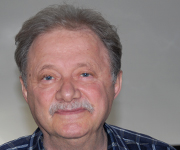MEDICAL education in Australia has undergone an extensive revolution in the past 20 years, but does it produce a better graduate?
We have witnessed a veritable explosion of new medical schools, each championing its own unique agenda. The overarching aim seems to have been the pressing demand for an increase in the medical workforce, which in turn created the opportunity to graduate a “different” kind of doctor.
A political spin-off of this process has been the placement of medical schools in regional Australia, where universities have endeavored to meet the social and political needs of these regions by implemented differing entry criteria, different course structures and varied content.
The traditional medical education model was steeped in the rigorous scientific disciplines of the pre-clinical years. Students were then introduced to general medicine and surgery taught by practising doctors in a hospital setting. The total time spent in completing such a traditional course was 5-6 years.
Over the past 30 years another pedagogy has been incrementally adopted and has now become the preferred method of teaching: problem-based learning (PBL). PBL is particularly suited to the other relatively recent innovation of teaching medicine in a 4-year postgraduate entry course.
PBL focuses on early exposure to and dissection of patient problems without prior time spent in the acquisition of deep learning of the basic clinical sciences. Under the watchful guidance of trained tutors, the student comes to an understanding of patient problems, learning the necessary details of the basic sciences as they become relevant to the clinical scenarios.
It was initially hoped that this integrated system of PBL would obviate the more arcane and seemingly irrelevant content of the traditional model in relation to patient care. And, as a bonus, students were to be immersed in the clinical world ab initio — from hospitals to general practice.
These changes in medical education have attracted plenty of criticism such as: “medical education has been progressively morphing from a scientific discipline into a trade course” and “universities are graduating less-capable doctors than they used to. The unilateral declaration of certain areas of knowledge to be unnecessary, coupled with the pressure to produce more doctors is producing a suboptimal physician”.
The changes have also thrown up many questions, such as why one medical school graduates some doctors with an MD and others graduate with a BMed or the traditional MB BS, despite no obvious differences in course content. And yet, whether there is a measurable difference in core knowledge and clinical competence between graduates from the various medical schools, with their differing entry criteria and course structures, remains a moot point.
There have been many attempts to measure this, such as one review that found little difference.
A recently released report — the Higher Education Base Funding Review — examined the ongoing funding of our universities and officially recognised the chronic under funding of medical education.
Indeed, medicine is listed in the most expensive bracket of university courses with students paying more than $9000 in fees annually. As the Australian Medical Students Association points out, the combined student fees and government funding amounted to $28 622 per student in 2011.
The time is ripe for a more comprehensive review of Australian medical education, building on data gathered from previous inquiries.
We need to know: if the cost of medical education is discouraging students from lower socioeconomic groups; if the move towards regional medical schools has had any impact on the number of graduates electing to go into rural general practice; and finally, whether the percentage of graduates undertaking further specialist training has changed.
In our current evidence-based era, documenting non-anecdotal evidence assessing the caliber of graduates from different medical schools, and calculating the true cost-effectiveness of producing these graduates, is surely a reasonable request.
After all, evidence rules supreme in modern medical practice.
Dr Martin Van Der Weyden is emeritus editor of the MJA.
Posted 13 February 2012

 more_vert
more_vert
Martin is as erudite and to the point as ever.
We, of the cohort of early baby-boomers through to the early genXers, have watched with something approaching horror and disbelief the morphing of undergraduate medical training from one of a rigorous preclinical grounding in basic biological sciences followed by a clinical immersion/apprenticeship in the hospitals to one that seems to be something akin to an advanced ‘Readers Digest’ model perhaps exemplified by a “this is Dick’s sick liver, go figure” dictum (with tutorial help of course). Surely as Martin says, it is time to reasses (as objectively as possible) the strengths and weaknesses of the plethora of training programs that now adorn the Australian landscape. Counter-intuitively, it may well be that the cheaper more recent postgraduate courses are actually just as good or even better than the old dogma. However it would be tragedy to find out down the track that that assumption is totally incorrect. As a pathology based haematologist who fends inquiries from general practitioners and other specialists on a daily basis, my personal observation (perhaps bias) is that newer graduates are just as smart as we were (possibly more so) however, they have significant gaps in knowledge and understanding of the basic pathophysiological principles that underpin the intelligent and appropriate selection of succint testing algorithms for the particular signs and symptoms in their patients and that they also have some limitations in interpreting the results. Unfortunately, the study of pathology at the undergraduate level more than other subspecialty, with the exception of anatomy, has been a vanishing undergraduate entity with some medical schools in Australia now having no staff whatsoever with specialist pathology expertise to help teach their students.
Thank you for your paper. The current attitude to medical training may represent a “emperor’s new clothes” syndrome. We no longer know why people die because post-mortems are rarely performed and perhaps the same will be true of medical education.